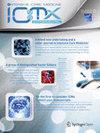Advancements in understanding the mechanisms of lung–kidney crosstalk
IF 2.8
Q2 CRITICAL CARE MEDICINE
引用次数: 0
Abstract
This narrative review delves into the intricate interplay between the lungs and the kidneys, with a focus on elucidating the pathogenesis of diseases influenced by immunological factors, acid–base regulation, and blood gas disturbances, as well as assessing the effects of various therapeutic modalities on these interactions. Key disorders, such as anti-glomerular basement membrane (anti-GBM) disease, the syndrome of inappropriate antidiuretic hormone secretion (SIADH), and Anti-neutrophil Cytoplasmic Antibodies (ANCA) associated vasculitis (AAV), are also examined to shed light on their underlying mechanisms. This review also explores the relationship between acute respiratory distress syndrome (ARDS) and acute kidney injury (AKI), emphasizing how inflammatory mediators can lead to systemic damage and impact multiple organs. In ARDS, fluid overload exacerbates pulmonary edema, while imbalances in blood volume, such as hypovolemia or hypervolemia, can precipitate renal dysfunction. The review highlights how mechanical ventilation strategies can compromise renal blood flow, trigger systemic inflammation, and induce hemodynamic and neurohormonal alterations, all contributing to lung and kidney damage. The impact of extracorporeal membrane oxygenation (ECMO) on lung–kidney interactions is evaluated, highlighting its role in severe respiratory failure and its renal implications. Emerging therapies, such as mesenchymal stem cells and extracellular vesicles, are discussed as promising avenues to mitigate organ damage and enhance outcomes in critically ill patients. Overall, this review offers a nuanced exploration of lung–kidney dynamics, bridging historical insights with contemporary perspectives. It underscores the clinical significance of these interactions in critically ill patients and advocates for integrated management approaches to optimize patient outcomes.在了解肺-肾串联机制方面取得的进展
这篇叙述性综述深入探讨了肺与肾之间错综复杂的相互作用,重点是阐明受免疫因素、酸碱调节和血气紊乱影响的疾病的发病机制,以及评估各种治疗方法对这些相互作用的影响。此外,还研究了抗肾小球基底膜(anti-GBM)疾病、抗利尿激素分泌失调综合征(SIADH)和抗中性粒细胞胞浆抗体(ANCA)相关性脉管炎(AAV)等主要疾病,以揭示其潜在机制。本综述还探讨了急性呼吸窘迫综合征(ARDS)与急性肾损伤(AKI)之间的关系,强调了炎症介质如何导致全身性损伤并影响多个器官。在 ARDS 中,体液超负荷会加重肺水肿,而血容量失衡(如低血容量或高血容量)则会诱发肾功能障碍。综述强调了机械通气策略如何损害肾血流、引发全身炎症、诱发血流动力学和神经激素改变,所有这些都会导致肺和肾损伤。文章评估了体外膜肺氧合(ECMO)对肺肾相互作用的影响,强调了它在严重呼吸衰竭中的作用及其对肾脏的影响。文中还讨论了间充质干细胞和细胞外囊泡等新兴疗法,认为它们是减轻器官损伤和提高危重病人预后的可行途径。总之,这篇综述对肺-肾动力学进行了细致入微的探讨,将历史见解与当代观点相结合。它强调了这些相互作用在重症患者中的临床意义,并提倡采用综合管理方法来优化患者的预后。
本文章由计算机程序翻译,如有差异,请以英文原文为准。
求助全文
约1分钟内获得全文
求助全文
来源期刊

Intensive Care Medicine Experimental
CRITICAL CARE MEDICINE-
CiteScore
5.10
自引率
2.90%
发文量
48
审稿时长
13 weeks
 求助内容:
求助内容: 应助结果提醒方式:
应助结果提醒方式:


